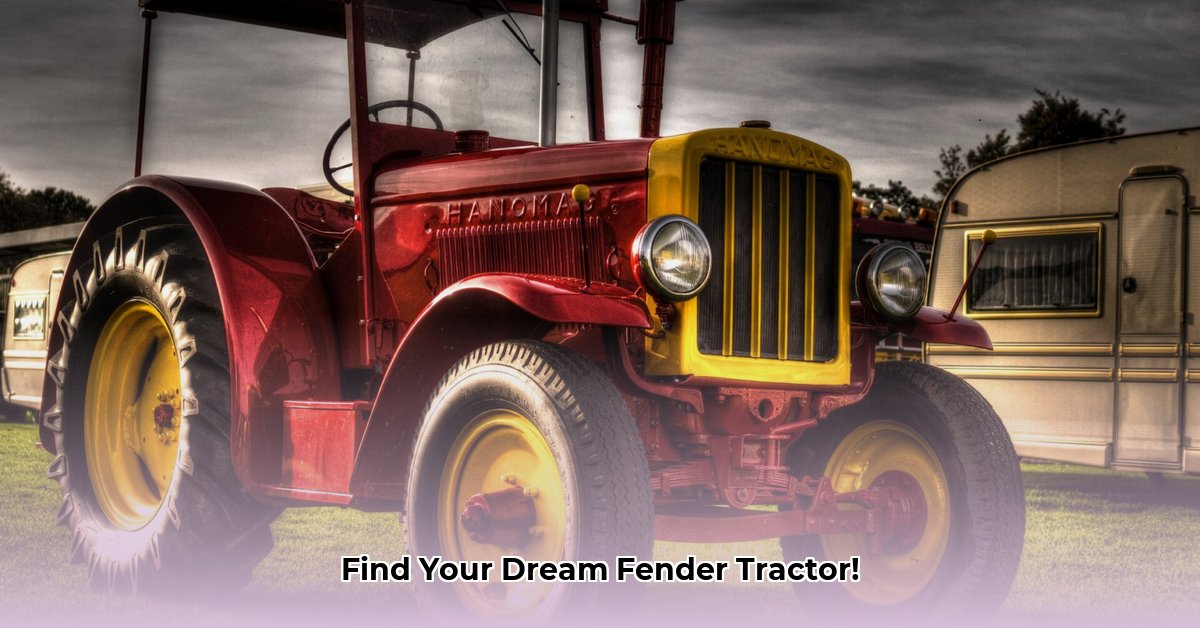
Choosing the Right Tractor Fenders: A Buyer's Guide
Selecting the right fenders for your tractor is crucial for protection, efficiency, and longevity. This guide helps you navigate the choices, ensuring you find the perfect fit for your needs and budget. The wrong fenders can lead to damage, reduced efficiency, and even safety hazards. But choosing wisely can significantly extend your tractor's life and enhance its performance. Let's explore the key factors to consider. For more information on reliable tractor brands, check out this helpful resource: reliable tractor brands.
Sizing Your Fenders
Before considering material, you must determine the appropriate size. Improper sizing renders fenders ineffective – too small, and they offer minimal protection; too large, and they can interfere with tractor operation. Measure your tractor's wheels and overall dimensions to identify the correct fender size. Always consult your tractor's manual for specific size recommendations. Don't underestimate the importance of this crucial first step!
Fender Materials: A Comparison
The material you choose significantly impacts durability, cost, and maintenance. Each has its strengths and weaknesses:
Steel: Offers exceptional durability and strength, providing robust protection against impacts and debris. However, steel fenders are heavier, potentially reducing fuel efficiency, and are susceptible to rust. Regular cleaning and rust-proofing are essential for long-term longevity. Are you prepared for the extra maintenance?
Plastic: Lightweight and cost-effective, plastic fenders are rust-resistant and easy to clean. However, they are less durable than steel, prone to cracking under stress from impacts or extreme temperatures. They are generally suitable for lighter-duty applications and milder climates. Will your operating conditions allow for the use of plastic fenders?
Composite: These materials represent a balance between strength, weight, and cost. They often combine the best properties of steel and plastic, offering good durability and resistance to rust while remaining relatively lightweight. However, they may require specialized installation techniques. Consider the installation complexity; do you have the skills or access to professional installation?
Here's a comparative table to help you decide:
| Material | Durability | Weight | Rust Resistance | Cost | Maintenance |
|---|---|---|---|---|---|
| Steel | Excellent | Heavy | Low | High | High |
| Plastic | Moderate | Light | Excellent | Low | Low |
| Composite | Good | Moderate | Good | Moderate | Moderate |
Installing Your Tractor Fenders: A Step-by-Step Guide
Proper installation is key to ensuring your fenders offer optimal protection and performance. Always refer to your tractor's manual for specific instructions. Improper installation can lead to damage or even create safety hazards. Here's a general approach:
1. Preparation: Gather necessary tools (wrenches, bolts, drill if needed), clean the mounting areas thoroughly, and carefully review the manufacturer's instructions.
2. Alignment: Align the fenders with designated mounting points on your tractor. Precise alignment is essential for a secure and functional fit.
3. Securing: Use the appropriate bolts and fasteners to attach the fenders. Never overtighten, as this can damage the fenders or tractor.
4. Inspection: Inspect the installation, ensuring all fasteners are secure, and the fenders are correctly aligned and don’t interfere with any moving parts.
Maintaining and Repairing Your Tractor Fenders
Regular maintenance extends the lifespan of your fenders. Ignoring minor issues can lead to costly repairs. Here’s what you should do:
- Cleaning: Regularly clean fenders with soap and water to remove mud and debris, preventing rust and damage.
- Rust Prevention: For steel fenders, apply a rust-proofing coating regularly to prevent corrosion.
- Repair: Address cracks or dents promptly. Minor repairs can often be handled easily; larger issues may require professional help.
Future Trends in Tractor Fenders
The agricultural industry is embracing sustainability. Expect to see increased use of recycled plastics and bio-based composites in fender manufacturing, offering eco-friendly alternatives without compromising durability. Lighter, stronger materials are also on the horizon, improving fuel efficiency. Additionally, more automated installation systems are being developed to simplify the process.
Key Considerations Before You Buy
Before making your purchase, consider the following:
- Budget: Establish a realistic budget to guide your choices.
- Workload: Consider the intensity of your tractor's use; heavier workloads demand more durable fenders.
- Material Compatibility: Check your tractor's manual to ensure material compatibility.
- Installation: Assess your skills; professional installation might be necessary for some materials.
- Maintenance: Factor in the ease and cost of maintaining the type of fender you choose.
By carefully considering these factors, you can choose the right fenders to protect your tractor and enhance its performance. Happy farming!